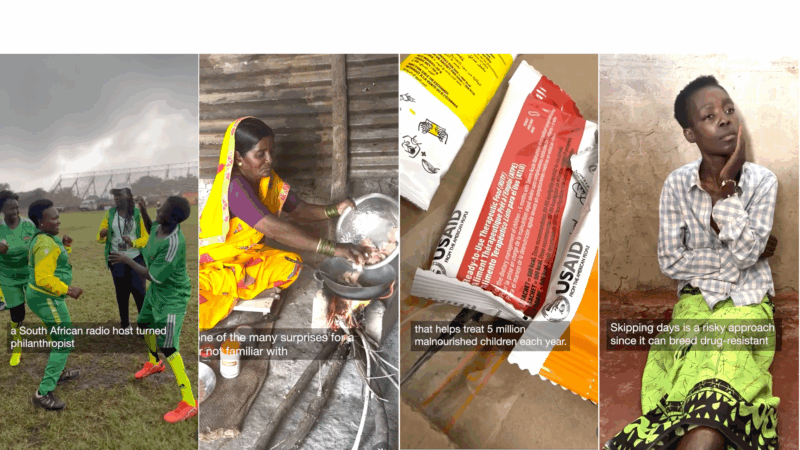A deep dive on U.S. reading and math scores, and what to do about them
U.S. students were still nearly half a grade-level behind in both math and reading in the spring of 2024, compared with achievement levels before the pandemic. That’s according to the latest release of the Education Recovery Scorecard, a data-rich deep-dive into student learning.
Today’s news arrives on the heels of The Nation’s Report Card, released at the end of January, which also found students still trying to make up for learning they missed during the pandemic.
But, if that report card provided a grainy Polaroid of what’s happening in schools, the Education Recovery Scorecard offers a high-resolution digital photo, allowing researchers to zoom into student learning at the district level in some 8,700 school districts.
The Scorecard is a joint venture between Harvard University’s Center for Education Policy Research and The Educational Opportunity Project at Stanford University.
Here are six quick takeaways from the new, third-annual Scorecard.
1. U.S. students are still nearly half a grade behind in math and reading
It’s been nearly five years since the pandemic first closed schools, yet students are still behind. The Scorecard also shows students fell further behind in reading from 2022 to 2024.
“It’s not just that students are failing to catch up, but that students are continuing to fall behind,” says one of the report’s authors, Harvard’s Tom Kane.
That reading trend line raises important questions about how quickly states can expect to see improvement after many passed laws to improve literacy instruction.
These data suggest it may be too soon to expect improvement, or that passing a law is easier than actually improving literacy instruction. Or both.
2. 100+ school districts performed above pre-pandemic levels in math and reading
While no state has returned its math and reading scores to pre-pandemic levels, the Scorecard is able to highlight at least 100 individual districts that have returned to form.
In fact, just a quick glance into the data for Louisiana, a state that led, or nearly led, in math and reading recovery both, shows some districts, including Lafayette Parish and Terrebonne Parish, that are three-quarters of a grade level – or more – ahead of their 2019 reading levels.
3. Achievement gaps widened
According to the Scorecard, the nation’s highest-income districts were “nearly 4 times more likely to recover” in math and reading than the lowest-income districts.
Since the pandemic started, the disparity in math scores, specifically, has grown by 11 percent.
A score disparity between students in predominantly non-minority versus minority districts has also increased 15 percent.
Sean Reardon, director of the Educational Opportunity Project at Stanford and a co-author of the study, calls these results evidence of “a pernicious inequality.”
4. Federal relief money prevented larger losses, but how it was spent matters
In response to the COVID-19 pandemic, Congress poured $190 billion into the nation’s schools.
“In the spring of 2021, when the American Rescue Plan passed, the focus was on getting schools open again,” says Harvard’s Kane. “And so districts were only required to spend 20% on academic recovery.“
Many districts prioritized adding mental health supports for students or upgrading aging facilities, including HVAC. The Scorecard doesn’t argue those were poor choices, only that it’s not realistic to expect that kind of spending to improve learning the way, say, a tutoring program can.
According to the report, “student achievement grew more in districts that spent more on academic interventions, such as tutoring or summer school.”
5. Chronic absenteeism: It’s hard for students to catch up if they’re not in school
“If the pandemic was the earthquake,” Tom Kane says, “we’re still dealing with the tsunami of chronic absenteeism that is slowing students’ learning.”
Chronic absenteeism, defined as missing more than 10 percent of the school year, was already a problem, but soared after the pandemic’s disruption of public schooling.
The Scorecard includes absenteeism data for 20 states through spring of 2024. In those states, while chronic absenteeism continued to fall, more students are still missing more school than they were in 2019.
Research has demonstrated a clear connection between missing school and lower student achievement. Not only that, but one student’s absence can affect the achievement of their peers too, with teachers being forced to spend more time backtracking and repeating instruction.
6. The Scorecard prescription
The Scorecard offers a few prescriptions for educators, administrators and lawmakers:
- Without more federal help, states and schools should focus as much of their own funding as they can on academic recovery.
- Communities should turn their attention to talking up the importance of daily school attendance. This kind of messaging shouldn’t just be left to schools.
- Research suggests that parents don’t always know when their student is struggling, so the Scorecard encourages teachers to communicate directly with families.
“Parents need to know if their child is below grade level so they can sign up for summer learning, or ask for a tutor,” Kane says. “If they don’t know, they’re not going to ask for help.“
Finally, more research is needed to study the range of reforms out there, including those new laws around improving literacy instruction, as well as efforts to ban cell phones from schools.
When policies improve learning, the researchers say, schools need to know that – and to understand why.
Top Instagram reels from Goats and Soda in 2025: Plumpy’Nut, aid cuts, soccer grannies
Our most-viewed Instagram videos include reports from a Rhode Island factory that makes special food for malnourished children and from a tournament for soccer-playing "grannies."
‘The Rest of Our Lives’ takes readers on a midlife crisis road trip
America's literary highways may be plenty crowded with middle-aged runaways fleeing lives that increasingly feel like a bad fit. But Ben Markovits adds a moving tale to the collection.
Hunker down with these 13 mysteries and thrillers from 2025
Mysteries and thrillers are enjoyable no matter the season, but there's something extra satisfying about curling up in the winter with a warm drink and an all-engrossing read. Here's what we suggest.
Should the U.S. model its vaccine policy on Denmark’s? Experts say we’re nothing alike
The Trump administration wants to revamp U.S. childhood vaccination recommendations to align with some other peer nations, including one tiny country in northern Europe.
Marijuana rescheduling would bring some immediate changes, but others will take time
President Trump set the process in motion to ease federal restrictions on marijuana. But his order doesn't automatically revoke laws targeting marijuana, which remains illegal to transport over state lines.
The cultural works becoming public domain in 2026, from Betty Boop to Nancy Drew
The original Betty Boop, the first four Nancy Drew books and Greta Garbo's first talkie are among the many works from 1930 that will be free to use, share and remake starting on Jan. 1.







